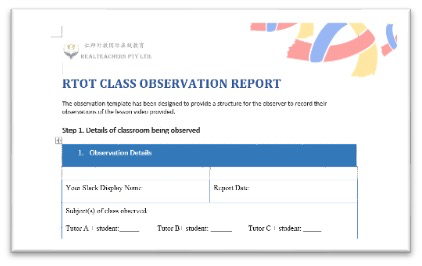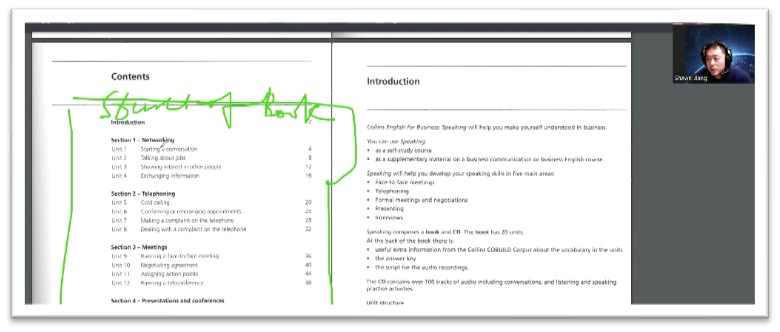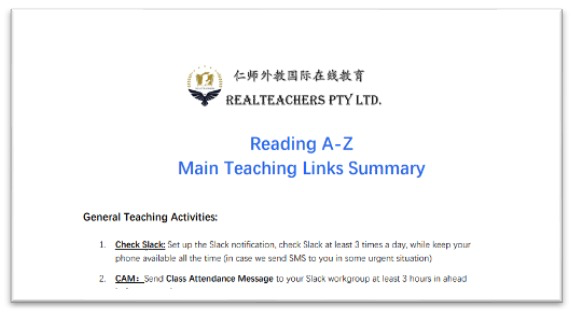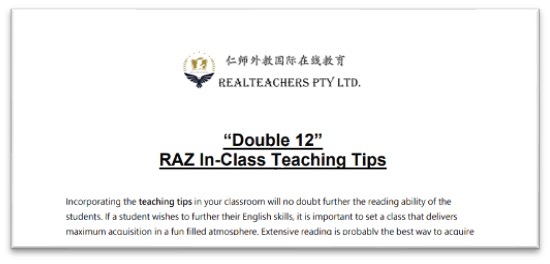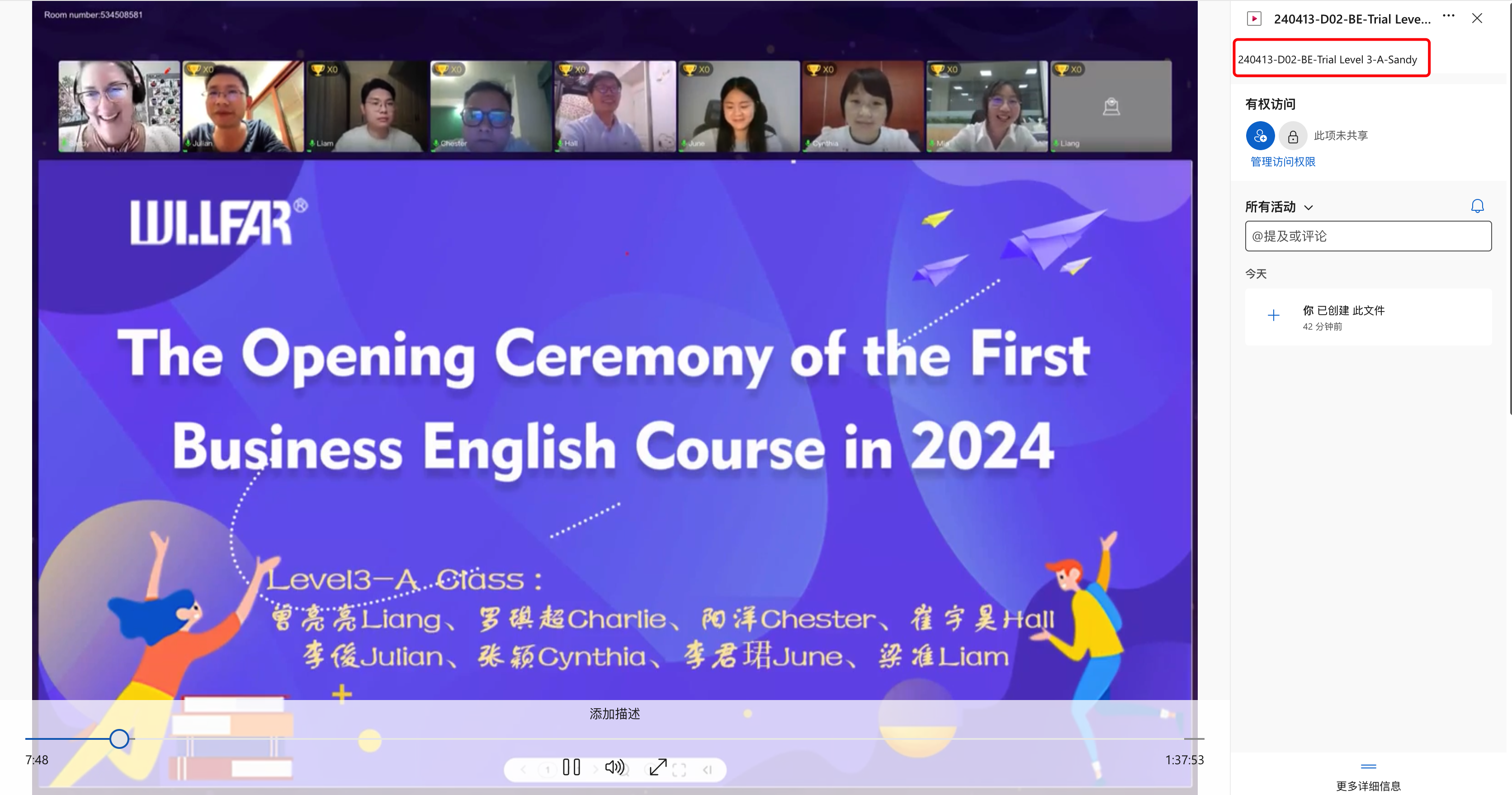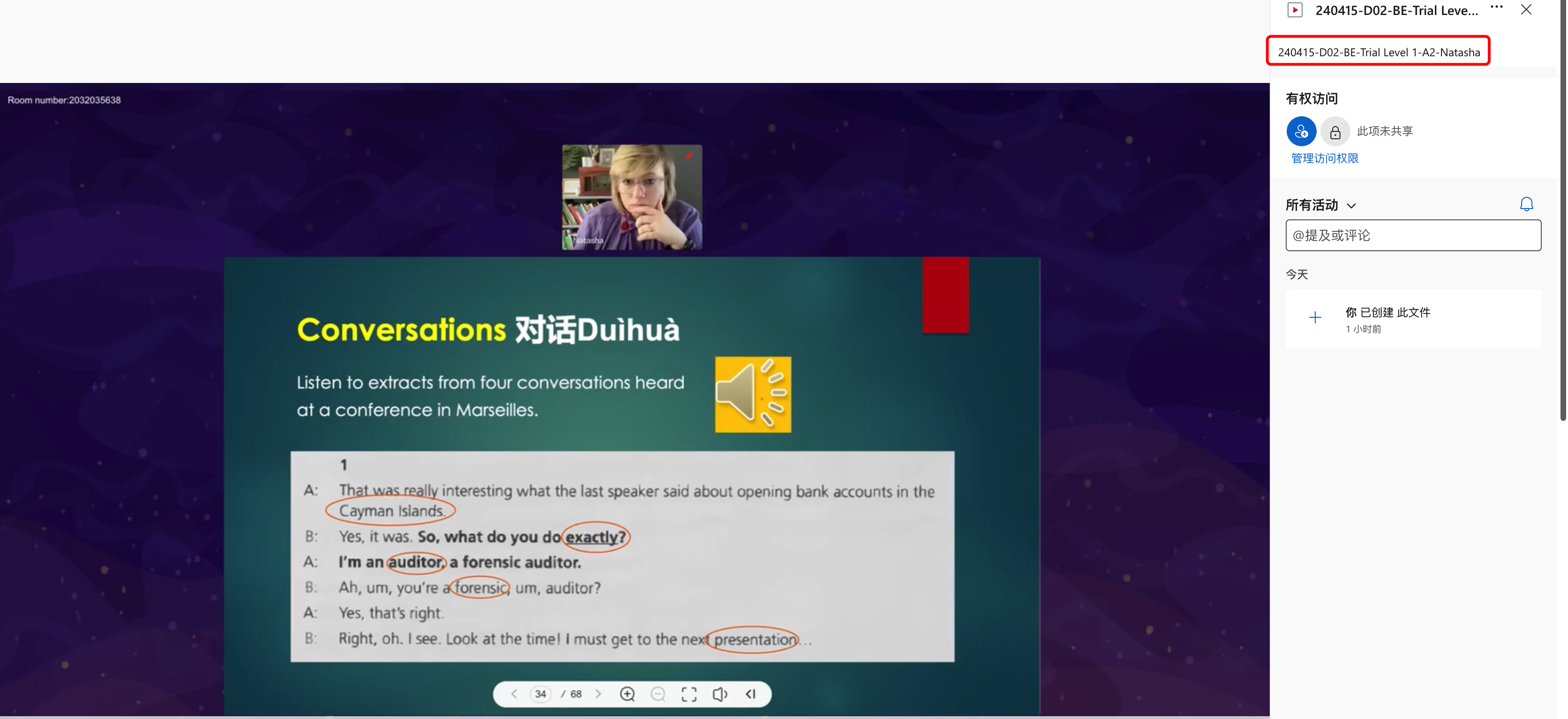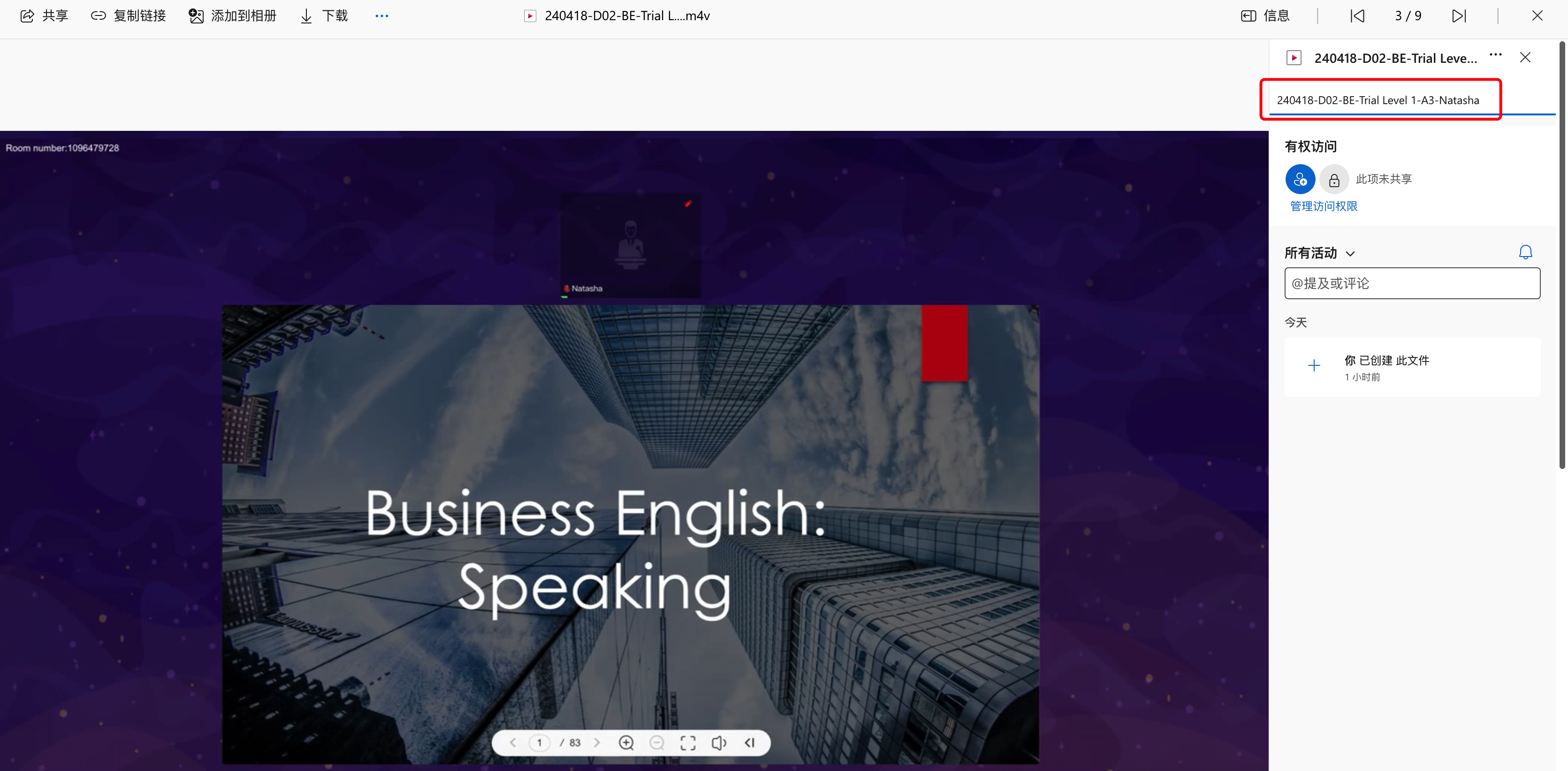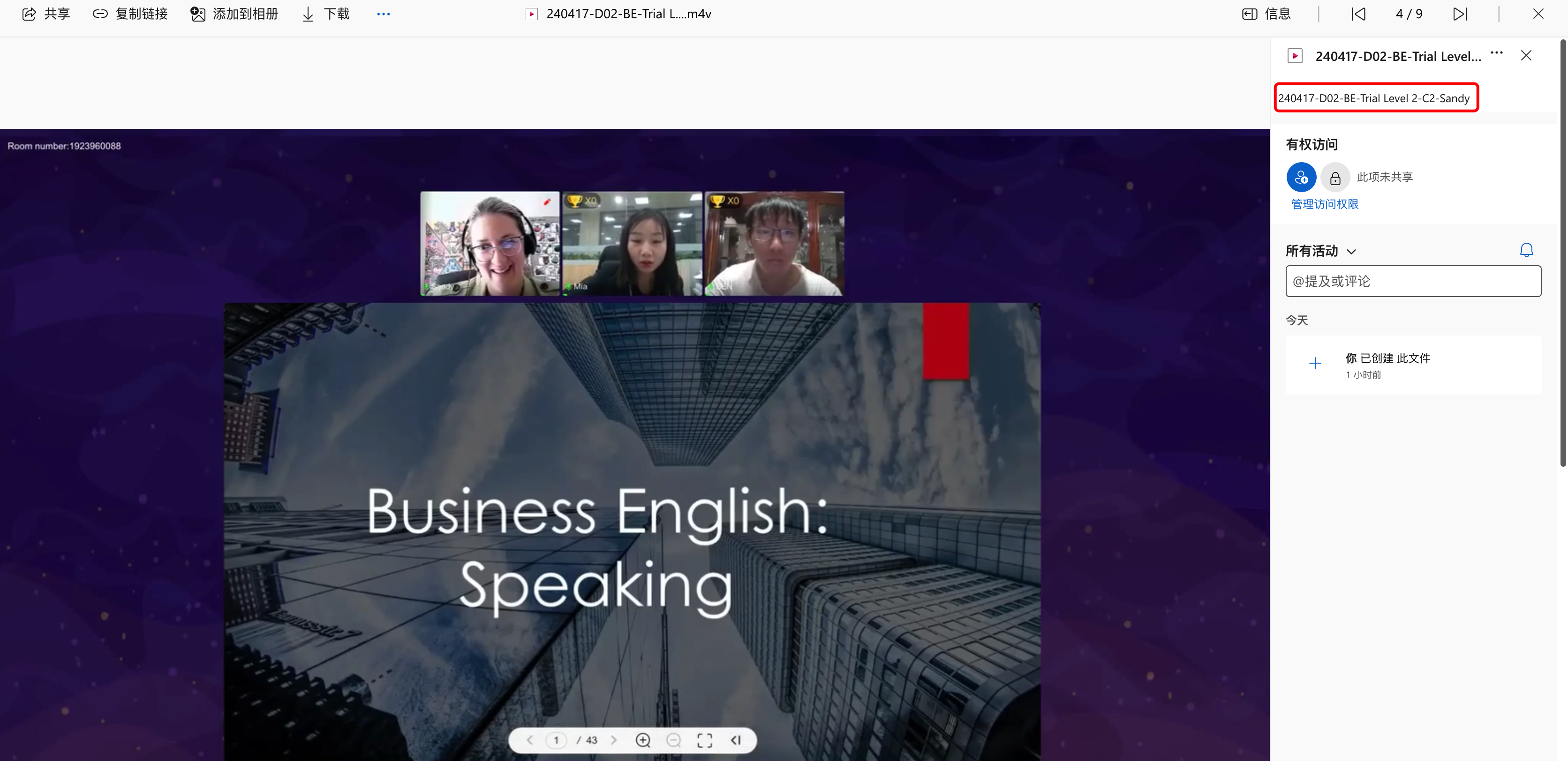Work for Excellence
BE course is the abbreviation of “Business English Speaking Course”. Before we start to teach a course, there are a few things we need to make clear:
- Who is this course teaching to?
- What could be the general teaching goal?
- What is the client’s specific expectation?
- How many aspects could be involved in this course?
- Last but not least, what and how we should teach to balance all these relevant conditions?
1.BE Course Concept:
Business English (BE) primarily encompasses key areas such as phone etiquette, meeting skills, customer service, introductions, negotiations, and daily communication. Central to the course are communication skills across various business contexts. It is essential for our teachers to have a clear understanding of this teaching concept and to repeatedly convey it to our students. We should always make our clients aware of these useful skills that can help them express and communicate better beyond their current level of English.
For instance, the initial unit of the BE textbook used by RealTeachers focuses on conversation skills. Rather than starting with basic vocabulary and idiomatic expressions, the course immediately introduces four valuable conversation skills to students:
- Identifying common points of interest for conversation.
- Initiating conversations that match the other person’s emotions.
- Ensuring expressions create distinct memorable points.
- Using humour to leave an impression on the other party.
2.Realistic Teaching Goals and Approaches for Specific Clients
Ideally, a business English course serves as a supplement to students with a minimum English level of B2 or higher. However, not all students meet this requirement.
Most students in business English courses are adults who have had prior systematic English learning experiences during their academic years. Despite their current English proficiency, their limited class time and age make them unsuitable for learning from basic materials.
Therefore, in the actual classroom teaching process, we need to review and expand the necessary basic English skills, such as related vocabulary and grammar, based on the in-using B2 level business English teaching materials and the actual English level of the students.
For students with lower English proficiency, our teaching goals should include:
- Improved ability to introduce themselves and their companies in English.
- Enhanced confidence in interacting with foreign customers.
- Guided by teaching objectives, design classroom assignments to demonstrate students’ learning results

After a certain number of lessons, it is crucial to test and display the teaching and learning results. This is essential for clients to decide whether to renew the course or not.
All teachers should engage in serious and systematic thinking to design activities for this purpose and align their teaching and homework assignments accordingly.
For teachers who are handling this course for the first time, the following suggestions are provided in the video. These suggestions should work well for this course, unless you have additional thoughts and input.
By incorporating these strategies, teachers can effectively test and display the teaching and learning results of the business English course, facilitating informed decisions for course renewal.
NOTE: Please contact @shawn in Slack for the above video content in PPT format for teaching purposes
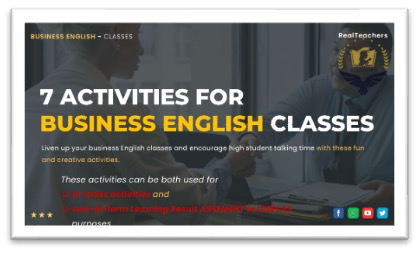
We have an existing textbook for our BE course. Please review the following textbook demo document for your information.
01-Teaching Material-Demo-Collins_English_for_Business_Speaking
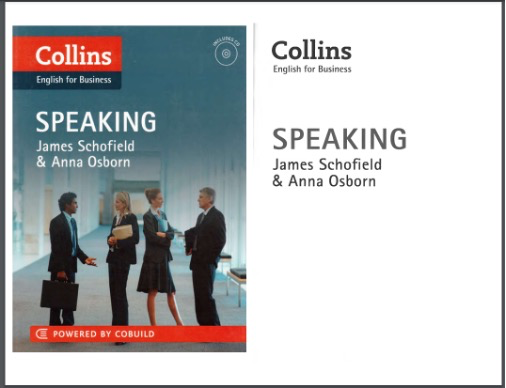
To achieve a standardized teaching procedure and streamline the teachers’ job, we have converted the textbook into PowerPoint format. Teachers are encouraged to modify the common PPTs to align with their teaching style. Please refer to the following PPT demo for your information.
01-240412-PPT Demo-BE S1U1-Start a conversation-CS-SJ- AM(Download to use)
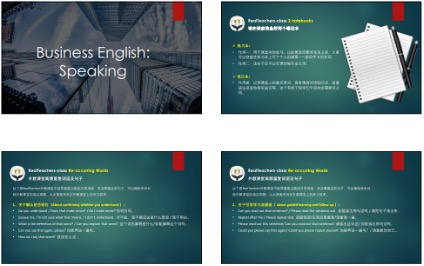
When teaching, it’s crucial for teachers to always keep the Teaching Result Display in mind to ensure a successful course. For actual teaching materials, please contact RealTeachers’ management.
In real teaching scenarios, especially at the beginning of a new course for lower English level students, there is a high likelihood that students may not understand the teacher’s instructions, leading to awkward silences in the classroom.
To minimize such situations, we suggest that teachers collect their own frequent reoccurring words and phrases into a document. This document can be shown to students ahead of class, making it easier for them to engage with the teacher in the classroom.
Once you have compiled your collection, please update Shawn in Slack. We have already set up a document for your reference and use.
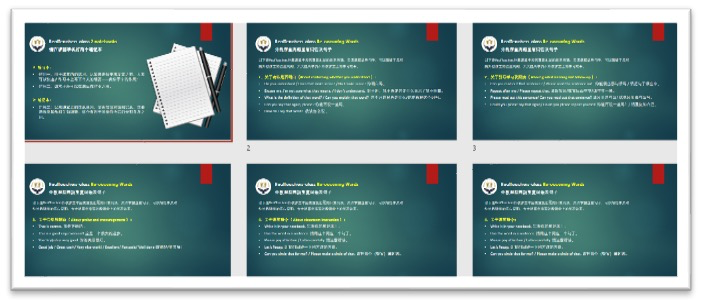
Teaching pace is determined by several factors, including:
- the content of the teaching materials,
- students’ starting level, and
- their learning ability.
The increasing difficulty of materials and the pace of students’ improvement often necessitate adjustments to the teaching progress. Teachers should be proactive in adapting the pace to ensure the best teaching outcomes.
For this current BE textbook, which is designed for students at a B2 English level, an ideal teaching pace would be one unit per class. (take each class lasting 90 minutes, with 6 students for example).
However, in practice, students’ levels may vary, and some may be below the B2 level. In such cases, when using the same teaching materials, teachers should:
- Reduce the teaching speed.
- Increase the depth of teaching by adding more basic knowledge, such as necessary vocabulary and grammar explanations.
In specific teaching scenarios, where each class is 90 minutes and consists of 6 students, a unit of the book may require 2-3 classes to complete.
While teaching, we should always ask for students’ feedback clearly and frequently. It is good just to ask in front of the class to make things transparent. We are always willing to adjust our teaching pace and teaching style to suit for students’ changing needs.
In summary, the decision on specific teaching progress should consider:
- The actual starting level of the students.
- Students’ enthusiasm for learning.
- Teacher’s evaluation after completing 1-2 classes.
- Providing timely feedback to RealTeachers Management for discussion and decision-making.
The structure of the teaching materials we currently use is very clear. We believe that experienced teachers can effectively familiarize themselves with the design ideas of this book and design optimized teaching plans accordingly.
To streamline lesson preparation and ensure a unified understanding of key teaching points, we have provided a training video for your reference. In this video, we discuss the following information:
- Clients’ Background
- Format of the Group Class
- Teachers’ Dress Code
- Goals and Tips for the Class
- Management of Teaching Materials
- Options for Homework Content
- Lesson Structure
- Guide to Teaching Materials (Book Structure)
Please watch the video carefully and make notes as necessary. If you have any suggestions for additions as you watch, please write them down.
Following the video, we have provided “Key Information from the Training Video – Tips for the Business English Group Class” for your reference and comparison.
All RealTeachers’ classes are Lesson Plan based.
We should never have a class that only read out what was written/echo what the books say. A responsible teacher always prepares their lessons in detail through well-designed lesson plans.
Teachers are bosses of themselves, RealTeachers team is here only to help teachers to gain more job opportunities. It is only those who strive for high teaching quality and care for their students’ academic growth that will get popular among the client students and get more recommendation by the management team.
Teachers’ endeavour in lesson preparation is not only for their customers but also for themselves. This way, they can stand out from other teachers.
There are a few key words we need to keep in mind when make a Lesson Plan:
1、Cleary mind: Teachers need have a good study of the teaching materials in ahead and know exactly what and how to deliver the lesson logically.
2、Specific: All information in a certain lesson plan should be exactly reflecting the teaching content, rather than talking in generalities and perfunctorily.
For an example:
“Engage students in grammar discussions and oral/written activities, incorporating elements of the lesson and reading on the page.”
Not only is there nothing wrong with this statement, but it is 100% correct in theory. The only problem with it, however, is that it’s so “right” that it could be used anywhere else. Instead of this kind of general talking, we would like to know the following details to be shown in the lesson plan:
- What is the specific grammar to be discussed in this lesson?
- What kind of Oral/Written Activities are we going to do in this lesson?
- Which elements of the lesson will be taught on purpose, and in which page if it’s necessary to be clarified?
3、Reasonable: We need to allocate reasonable time to different parts of the Lesson. This is easy to say, but it actually depends on the detailed design of the overall lesson plan. For example, we need to know how the students’ learning ability matches the difficulty of the teaching material.
4、Flexible: In addition to detailed course plan design, we also need to allow for some flexibility in course delivery. For example: one day a student may be inattentive, causing teaching to fall far behind schedule, and another day a student may learn too quickly, causing the textbook to run out. Teachers need to develop contingency plans to deal with this situation. (For example, review previous lessons, etc.)
5、Completeness: For ordinary classes, in addition to the main body of the class, the “Review of the Previous Class”section before class and the “Review/Summary of this Class” section after class are both very important. We should attach great importance to these two parts and conduct a concise and clear review of relevant information to maintain a complete course structure. Having said that, well-designed homework is necessary and very important.
NOTE:
The General Lesson Plan Template (60 mins version) below is generated for the <Great Writing> course.
We quote it here to showcase some ideas of what a lesson plan should be like.
Teachers need do their own modification to suit the current course teaching.
Please ask @Shawn in slack for a specific lesson to create a plan for. This is must-do task before your first teaching.
06-GW Lesson Plan-General Lesson Template- Level X Lesson X-SJ
(Download for using, this is not particular for BE course, however due to the similarity, it’s here for reference.)
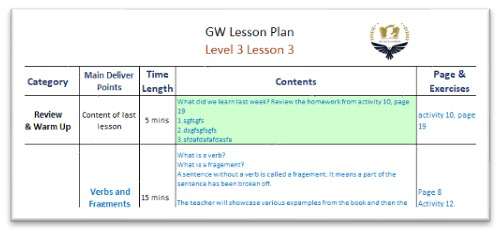
The trial class holds greater importance than regular classes as it serves as the student’s initial experience and significantly influences our chance of securing a contract. Consequently, there are distinct differences between regular and trial classes.
Note:
We make recommendations based on a 60-minute lesson. In different lesson length settings, please adjust the time allocated to each part accordingly.
Some General Trail Lesson Tips:
For a trial class, we need to introduce the learning goals, the overall book structure, the lesson structure, and the course structure to students, rather than just conducting a specific, detailed teaching lesson.
1、Introduced the Book Structure in general, let student know what they are going to learn and what expectation they can set for upon the finishing of the course; (reference duration: 15 mins)
- Mention 2-notebooks strategy
- Introduce book structure (using teacher’s white-board writing skills)
- Introduce Course structure
- Emphasis homework and after-class feedback
2、Introduced a typical lesson structure according to YOUR lesson plan; (reference duration: 15 mins)
- This will allow students to have a deeper understanding of what kind of activities they will expect during the lessons.
For example:
- 5-10 mins homework and lesson review, letting them what kind of format they may expect, e.g., dictation, narration, summary, etc.;
- 40-50 mins new lesson teaching, try to let students have some idea of the lesson pattern;
- 3-5 mins review and homework explanation
3、Have a mini demo teaching for specific paragraph/exercise etc. (30 mins)
- Make your own teaching demo session to showcase/identify a few things:
- The Informative teaching material
- Your teaching skills
- The students’ needs, etc.
- Make your own teaching demo session to showcase/identify a few things:
Based on this information, please design your Trial lesson plan, according to the template in the next step.
Based on your previous learning, i.e., BE teaching materials, BE Course training video and trail lesson plan introduction, let’s download the BE Trail Lesson Plan Template in Excel format and make your own.
Please ask @Shawn in Slack for a particular lesson to make a plan for.
After finalizing your lesson plan, please send it to @Shawn in Slack for review purpose.
01-240412-Lesson Plan-Business-Level 1 Unit 1 Lesson 1-CS
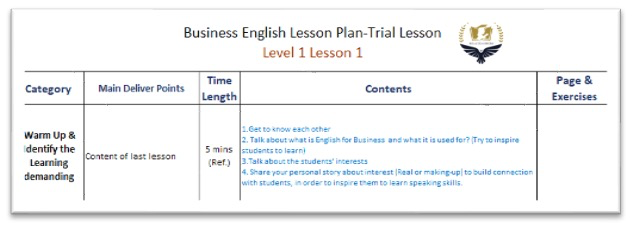
When submitting your Lesson Plan, please refer to the Naming Rule:
- YYMMDD -Lesson Plan-BE – “Section x-Unit x- Unit Name”-“Your Name”
For example:
240417-Lesson Plan-BE S1U4-Exchanging information -AM
(“YYMMDD”. stands for “YearYearMonthMonthDayDay”, is the date you create the file)
Do not hesitate to ask @Shawn at any time about any questions you might have.
All major instructional content is collected in the following Word documents. Please click to get a good review. To help you with a quick overview, the main points are listed below:
⛳️ General Teaching Activities:
- Check Slack
- Class Attendance Message
- Lesson Plan
- “X+1”Course Structure
- After-Class Feedback
- Certificate Rewarding
- Student Report
⛳️ General Class Notes:
- Punctuation
- Report Lateness
- Require 2 Notebooks
- Check Notebooks
⛳️ Tips for Class Teaching:

💫 Please read the following documents in detail for review purpose and better understanding.
With the deepening of teaching work, many teachers hope to get more students and follow themselves to learn for a long time. In this regard, the interests of teachers and the company are consistent. In many cases, the number of students taught by teachers is based on the recommendation of the company, but to a greater extent is more based on the quality and influence of the teaching provided by individual teachers.
On above, we have covered so many teaching aspects in a positive way.
Hereafter, we will list 9 adverse examples for everyone to understand how important it is to improve personal teaching ability and sense of responsibility in order to greater benefits for individuals and RealTeachers company.
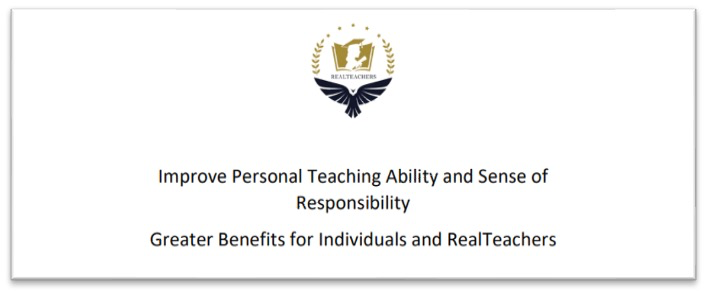
In this job, you, yourself, are the real boss.
Company can only recommend teachers to students; it is the clients’ final decision of whether to go with you or not.
Based on this, let’s keep on improving our teaching skills, while maintain a high sense of responsibility to students and enthusiasm for teaching.
This way, you and RealTeachers can achieve a win-win.
We have discussed a lot in this training page. All the necessary rules and reference information are well presented above. We trust that it is more about teachers’ responsibility than ability to have most of them be reflected in your future classes.
Please watch these following TRAIL CLASS demonstration videos and submit your observation report to share your opinions with us.
Please complete the observation report as save the file name following the naming 🔖 rule:
- YYMMDD-RE- Observation Report-your first name
Then send to @Shawn on Slack.
